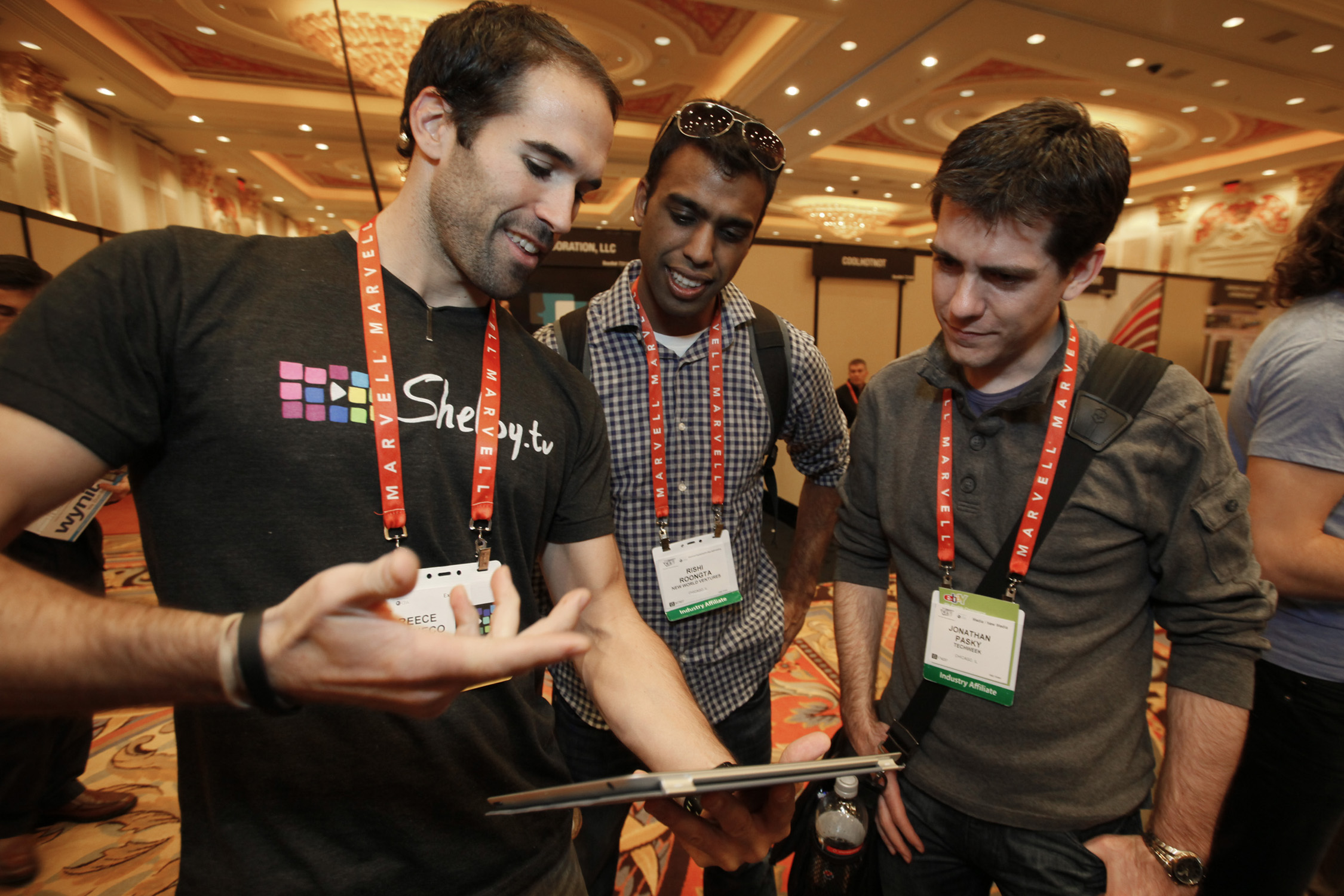The period 1980 to 2010 may have been defined by several trends, but none was more threatening to the industry or as complicated to overcome, than the arrival of the Internet.
When the first two connections of the Advanced Research Projects Agency Network (Arpanet) were joined between Leonard Kleinrock’s Network Measurement Center and Douglas Engelbart’s NLS system in California on 29 October 1969, neither man knew what a monster they’d created.
It wasn’t until the mid-Nineties that the network, known today as the Internet, really made an impact on popular culture. Today we take it for granted, and it is undeniably one of mankind’s greatest inventions; it has ushered in a new age of communication and knowledge exchange, cementing a period in human history that scholars often refer to as The Information Age. The Internet has even changed the way humans learn and retain information. The accessibility it provides often means that we now need only know where to find the information we need, rather than the information itself. We are permanently connected to those we wish to know, and contactable by those we don’t. Our lives have been changed irrevocably.
The seismic shift created by the arrival of remote networking and content sharing was, understandably, of great concern to an industry that based its existence on the accepted convention that face-to-face was the pre-eminent way to do business.
It’s probably fair to say that the exhibition industry was slow to react to the advent of the online age. Because of its very nature, a community that is built around the need for face-to-face interaction saw little benefit in investing in something so seemingly detached and nebulous as online communication.

However, the specific threats the online world presented to the exhibition industry were simple to comprehend. Websites gave companies a permanent shop front for their products, one that transcended international borders and, to a certain extent, language. Online product catalogues reduced the need that exists in many industries to attend an exhibition simply to peruse a company’s product offering, and new channels for interaction via email and social media lessened the need for an annual meet-up; conversations were now running throughout the year.
But if the leading lights of the exhibition industry know one thing, it’s enterprise. Companies such as UBM (now trading as Informa) soon confirmed that they were entering the ‘virtual event’ marketplace, opting to pump millions into the concept of online marketplaces occupied by virtual stands and online versions of ourselves, with visitors selectively visiting and interacting with virtual exhibitors.
In a deal with virtual-event technology provider InXpo, UBM set about holding more than 30 virtual events in 2009, a number that tripled to 100 by 2010. “We will provide leadership in the emerging ‘virtual business’ space,” said MD of UBM Studios, Kate Spellman. “Virtual business is the harbinger of a new era that will transform the Internet from a collection of pages to a series of engaging destinations.”
The company also took a pioneering step by breathing life into the dormant figure of Comdex, a one-time successful Las Vegas information technology show that had been cancelled in 2003. At its peak, Comdex boasted 2,300 IT industry exhibitors and 200,000 visitors, and courtesy of the reduced costs and appropriate market profile, it was to return to the exhibition calendar in November 2010, but now as a completely virtual event.
And return it did. Nearly 5,000 people attended the event over the course of the two days, making it then the largest independent virtual trade show in the IT industry. More than 100 speakers were listed, as users gathered online for 50 sessions on the event’s key topic – New Business Solutions: Embracing Disruptive Technologies & Changing Delivery Models. These sessions took place in a virtual exhibition hall with 30 exhibitors; big names including IBM, Intel, Microsoft, Symantec, Panasonic and D&H were present. Elsewhere, visitors could check in for educational sessions.
However, despite plans for another Comdex in 2011, the idea was a failure. Today the Comdex virtual website takes you to a page of links that features the very real and enduringly physical, Las Vegas-based information technology trade show Interop. The virtual experience was giving neither the attendees nor the exhibitors what they wanted.
According to Andrew Reed, MD of exhibitions and events at UK organiser William Reed, virtual events are just that – ‘virtually’ an event, definitively not an actual event. It is a crucial distinction. The idea that virtual trade show halls could be built online and inhabited by exhibitors and visitors in the form of online avatars seemed perfectly viable, but in reality – where business is done – it was not to be.
It soon became clear that virtual exhibitions were not going to subvert the industry in quite the way that the prophets had foretold. They would no more supplant real-world events than football video games would replace football matches. Instead we were seeing a shift, whereby a physical exhibition could logically develop a virtual element, rather than – as was the case with UBM’s ill-fated Comdex – become an entirely online entity.
The desire for personal interaction when doing business is not a phenomenon limited to the world of exhibitions. When you look back at forecasts of the way businesses were supposed to be operating today, you’ll find many widely accepted predictions that simply never came to be. The past is littered with false futures: the paperless office, the peopleless city, a world of people sitting alone in living rooms, connected to each other by a screen, personal jet packs and skycars – none of it happened. Ever-more impressive technology, improved connectivity and virtually instant access to information do not appear to have lessened the need for getting out to trade shows.
Theoretical physicist and co-founder of string field theory, Dr Michio Kaku, summarises the principle need for personal human interaction in an elegant and pragmatic way. The University of New York’s professor of theoretical physics and author of New York Times bestsellers Physics of the Future and Physics of the Impossible (the latter also a 12-part series on the Science channel in the US), says basic human instinct is the reason exhibitions aren’t going to disappear anytime soon:
“These predictions never came true because we’re social animals,” he says. “We like to bond with other people. You want to see who or what is up and coming – you want to see who is lying to you. You can’t do that on a computer screen.”
Bear in mind that Kaku is a firm advocate of somewhat contentious technologies such as the contact lens through which we can access the Internet (something that began life as Google Glass in 2013) or interactive digital ‘wallpaper’ that will replace desktop PCs. But despite his love for potentially game-changing technology, he claims this scope of access will never diminish the need for live events:
“The world is headed towards something called perfect capitalism. There is so much knowledge out there. When you go to an exhibition, or a supermarket, you already know exactly what something really costs,” he explains. “Today, supply and demand are imperfect. In the future, it will be perfect: you will know exactly what things really cost, how much profit the manufacturer is getting and who offers the cheapest product. That’s what we’re headed for, a flood of knowledge and perfect capitalism.”
Despite this torrent of information, and the fact that we needn’t leave our rooms to know about every product, Kaku says organisers shouldn’t panic. Technology, he argues, can do little to diminish human instinct:
“Some people think exhibitions will disappear. That we’ll all teleconference instead, so there’s no necessity to go to any trade show. Well that’s wrong. Because we are human beings. Our personality hasn’t changed in a hundred thousand years. In fact, if you could meet somebody from that long ago who was able to speak your language, they’d immediately understand your desires and wants. You see, we haven’t changed at all.
“We want to have meetings because we want to size people up. You want to see who interacts, who is the creative engine. You want to know who comes up with good ideas rather than goofy ideas.
“This is the paradox,” he continues. “We will have more information than ever before. But when we look at a press release, our first reaction is scepticism. Because you know a lot of it is written by a professional copy-editor who gets paid to hype up inferior products. You want to see it, touch it, kick it, test drive it. You want to have direct contact with people and products.”
That simple truth is why we will always have exhibitions, he claims. “We want bonding. We want the inside story, the gossip, the scuttlebutt, the scandal. All the stuff you’re not going to get in press releases.”


Leave a Reply